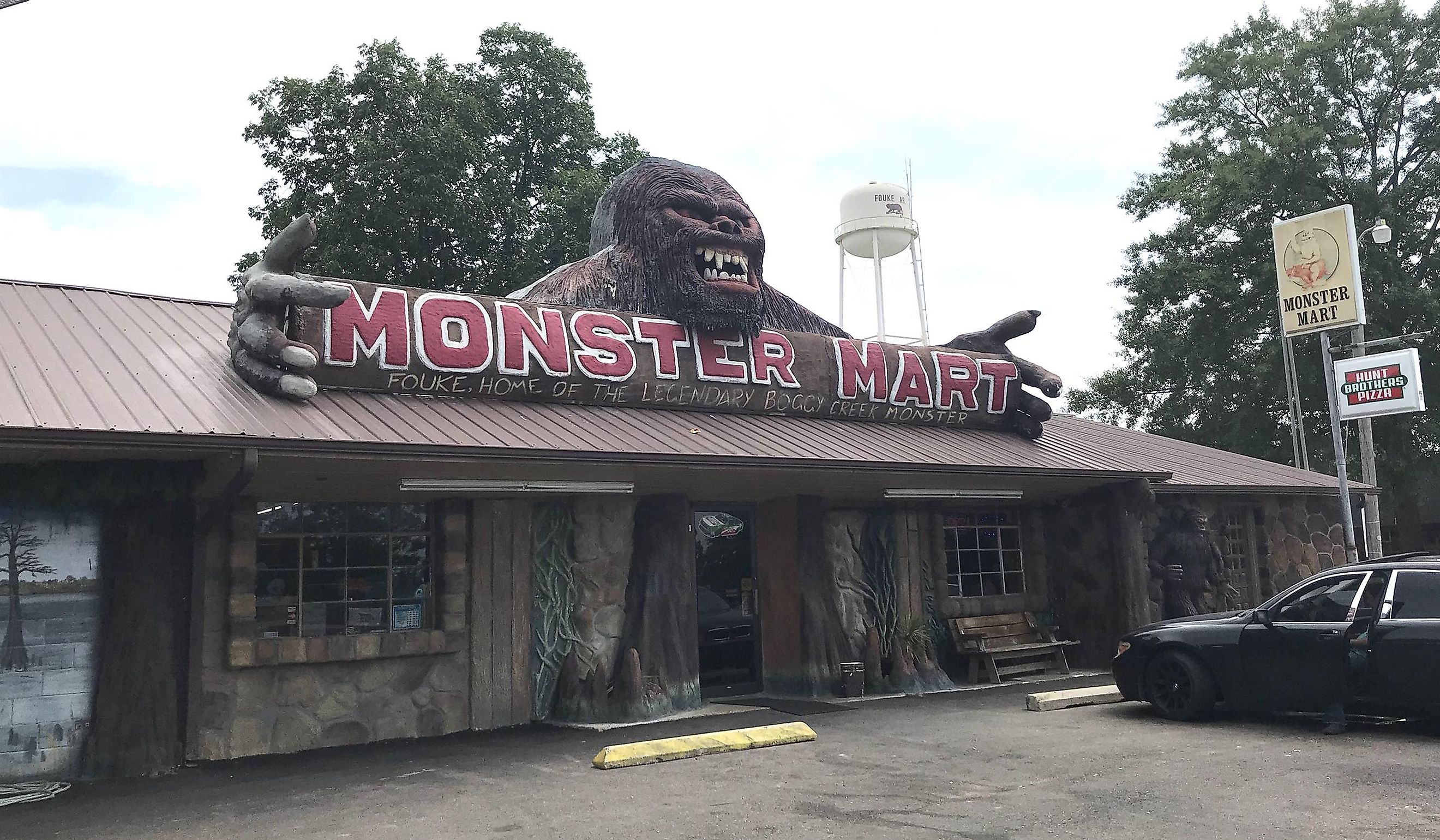
8 Strangest Landmarks in Arkansas
As one of America's strangest states, Arkansas has some strange landmarks. "Strangest" is subjective, of course, but Arkansas intrigues with Ozark highlands, Southern art, abandoned mines, and monsters real and imagined. All those qualities are enlarged—literally—via landmarks that remind residents and tourists why the Natural State has such a supernatural reputation. Visit the following Arkansas attractions to have your stereotypes confirmed or completely shattered by unparalleled strangeness.
Crater of Diamonds State Park - Murfreesboro
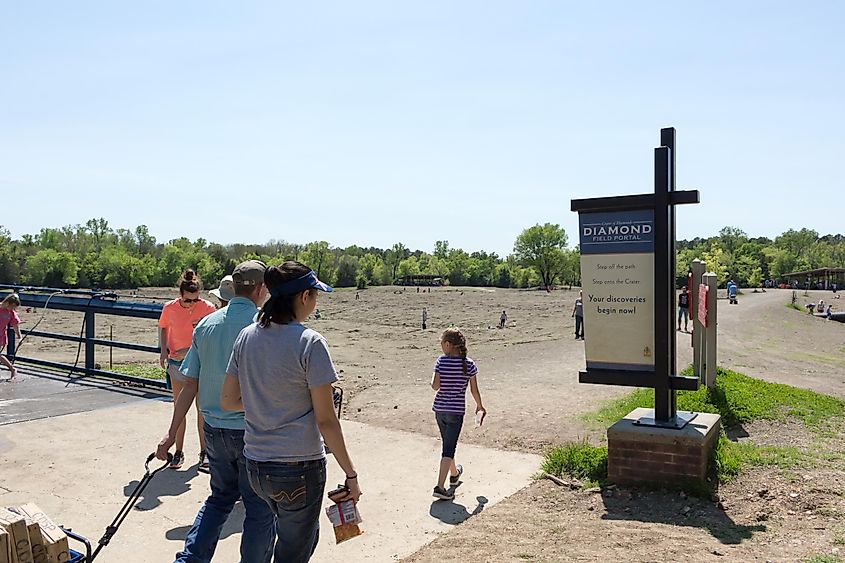
Crater of Diamonds State Park is an ancient volcanic crater turned into the world's only locale where regular citizens can find diamonds in their original volcanic source. For a small fee, anyone can bring a bucket and shovel to mine precious gems from this 37-acre site, which was bought by the state in 1972. But what really separates Crater of Diamonds from other state mines is that visitors own what they find—and what they find can be worth a fortune. Just last year, a French tourist unearthed a 7.46-carat chocolate-colored diamond. In 2020, an Arkansas resident nabbed a 9.07-carat brown behemoth. In 1924, long before Crater of Diamonds was a state park, it produced a 40.23-carat monster called "Uncle Sam." As the largest diamond ever found in the United States, Uncle Sam sold for over a million dollars adjusted for inflation.
Skirting the prosperous crater are walking trails, picnic sites, campsites, a gift shop, and even a water park.
Monster Mart - Fouke
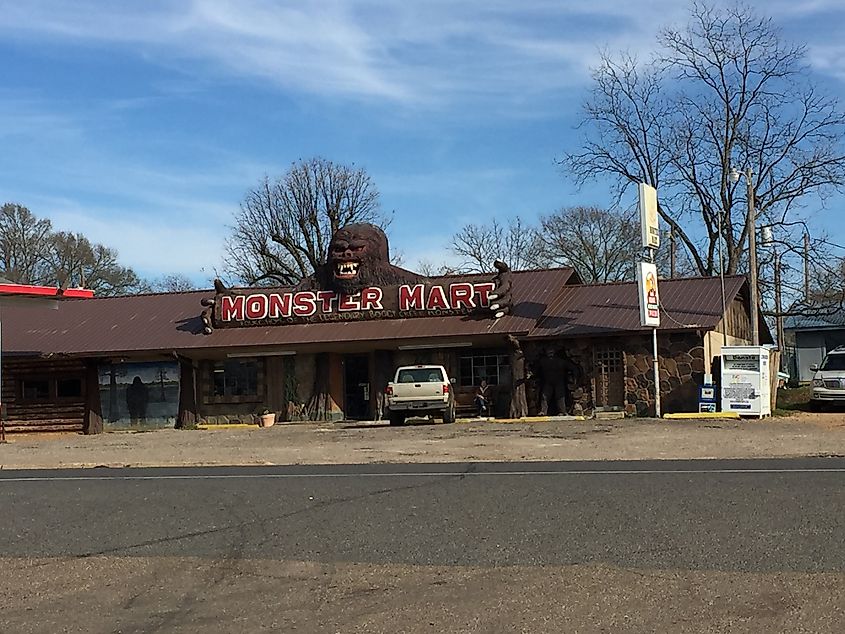
In the 1970s, a Bigfootlike creature put Fouke on the map. Alternately dubbed the Fouke Monster, Boggy Creek Monster, and Swamp Stalker, this cryptid terrorized locals (perhaps only their imaginations) and transfixed wider Americans, who immortalized the monster in their newspapers and movies (The Legend of Boggy Creek being most notable). Fouke still inspires fear and curiosity, not just with periodic monster sightings but with Monster Mart, a convenience store/museum/souvenir shop where you can buy Fouke Monster shirts, browse Fouke Monster artifacts, and pose with Fouke Monster statues. You can even attend the Fouke Monster Festival in April.
Rush Ghost Town - Rush
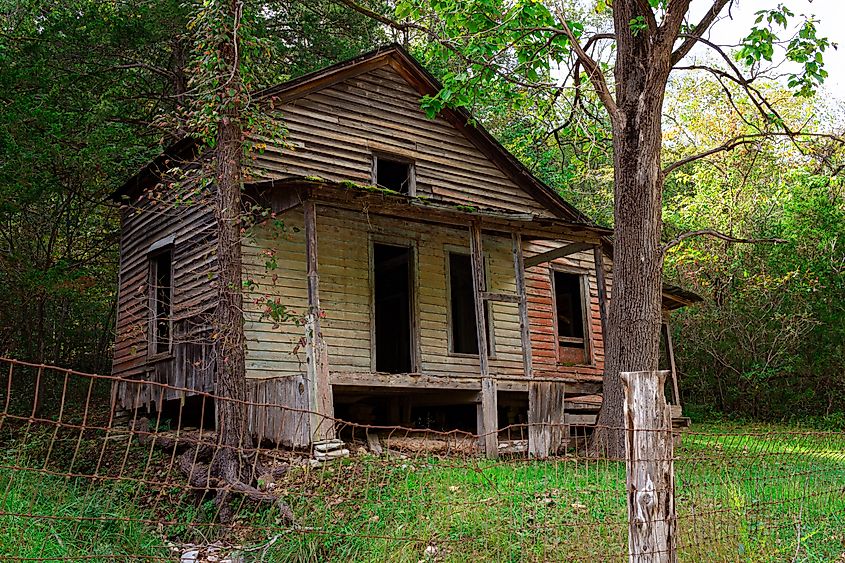
Rush is a defunct mining site that is arguably stranger than Crater of Diamonds. Instead of colorful gems, tourists can find ruins of an entire town that once served the zinc industry. It began in the 1880s after zinc was discovered at Rush Creek, a tributary of the Buffalo River, and peaked during WWI as one of the biggest mining towns in Arkansas. As often happens to communities that serve a single industry, Rush died when the zinc rush ended post-WWII. Now, its 1,300ish acres of industrial ghosts are preserved as the Rush Historic District and part of the Buffalo National River.
Look for ye older ghosts northwest of Rush near Lead Hill, where the ruins of another ambitious project remain. The Ozark Medieval Fortress was supposed to resemble a 13th-century French castle and is now a cautionary tale—and photo-worthy symbol—of insufficient funding.
Glory Hole Falls - Ozone
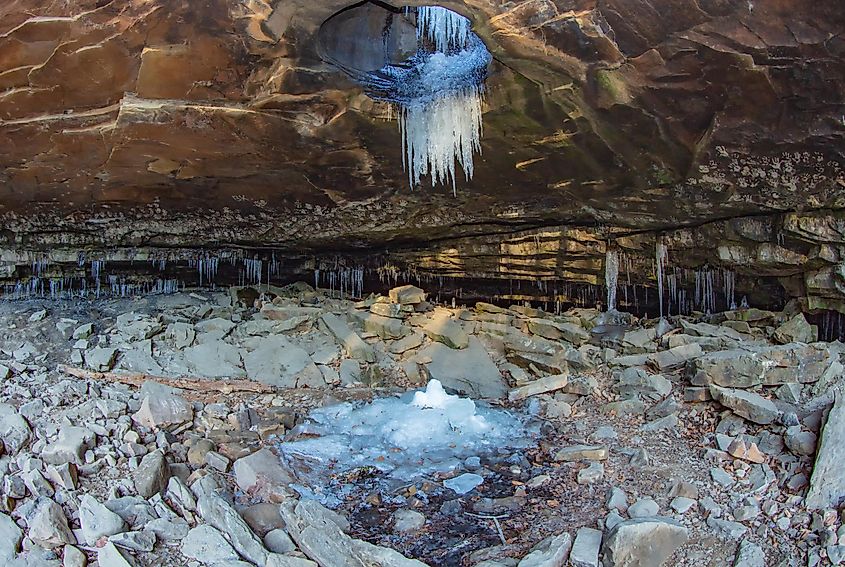
Kneel before this heavenly waterfall deep in the Ozark National Forest. Rather than flowing over a rock, Glory Hole Falls flows through one. A hole in an overhanging cliff allows water to drop some 30 feet and resemble a spotlight shining from heaven. In winter, the frozen water resembles an icy hand from god.
As part of a rugged, remote region, Glory Hole Falls is rimmed by other oddities, both natural and commercial. They include the Arkansas Sphinx, Arkansas Grand Canyon, and Grumpy's Burger Barn, the last of which sullenly sates sightseers in the small settlement of Ozone.
Crystal Bridges Museum of American Art - Bentonville
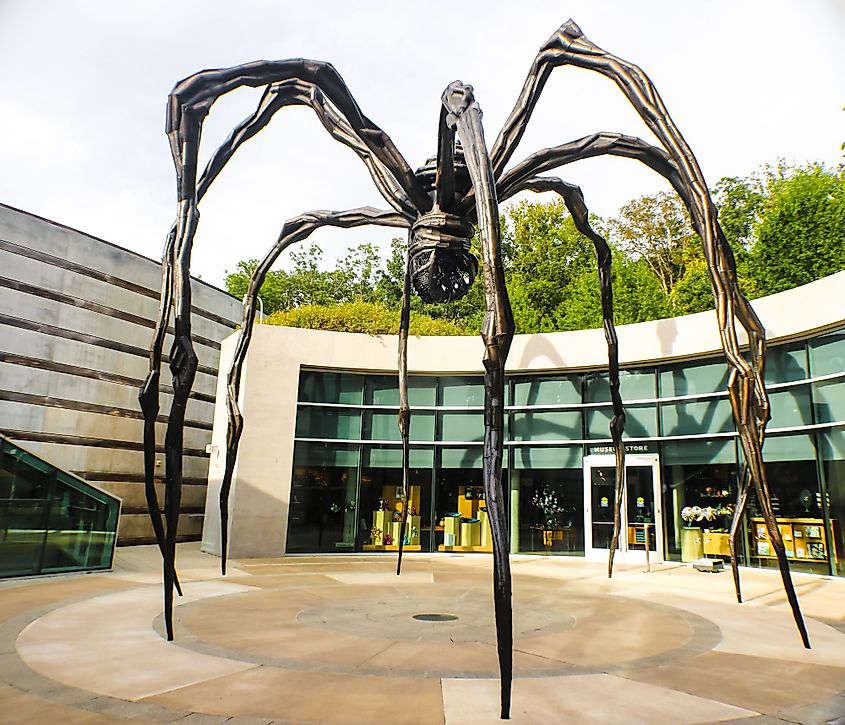
Despite being an Ozark city of just over 50,000 people, Bentonville has one of America's most lavish art museums. The Crystal Bridges Museum of American Art crowds 134 acres with spring-fed ponds, pavilion galleries, five miles of walking trails lined with sculptures (including a 30-plus-foot spider called Maman), and titular glass-enclosed bridges designed by renowned architect Moshe Safdie. But that's not Bentonville's only surprising museum. Overlooking Main Street is the Walmart Museum, which, though it sounds like an oxymoron, is an elegant preserve of Sam Walton's original 5&10 store. Renovations are underway, so the museum and its exhibits—notably Mr. Sam the Hologram—are temporarily housed a couple blocks away in the Heritage Lab.
Blanchard Springs Caverns - Fifty-Six
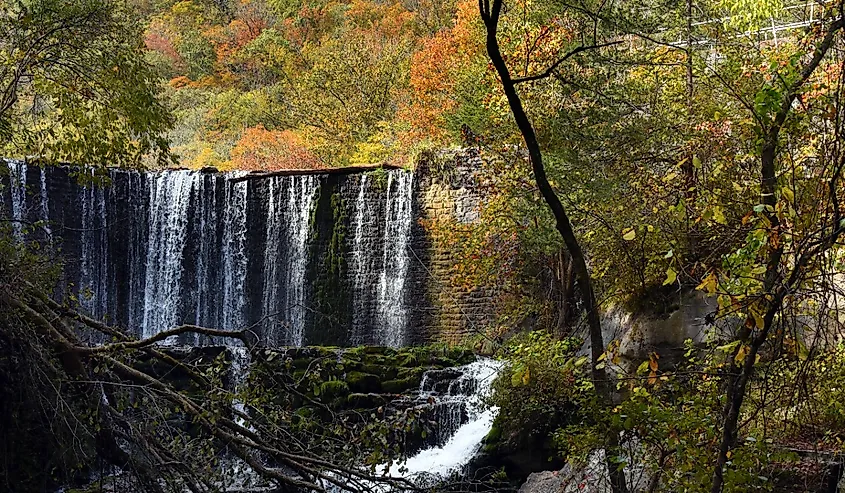
Blanchard Springs Caverns is a three-story underground formation dubbed a "living cave" due to its constant bustle. Bats, salamanders, spiders, crickets, frogs, millipedes, stalactites, stalagmites, and flowstones enchant human spelunkers, who have their choice of three routes: Dripstone Trail, Discovery Trail, and Wild Cave Tour. As you can guess, the last route is the roughest; spelunkers should be in good physical condition and wear athletic boots that they don't mind getting dirty. They need not adjust their wardrobe, though, since the cave stays 58 degrees year-round.
Outside of the cave are campgrounds, fishing and swimming holes, and the reflective Mirror Lake Waterfall. Outside of the outer cave complex is Fifty-Six, which, having been named after its school district, is one of the most uniquely named communities in America.
Christ of the Ozarks - Eureka Springs
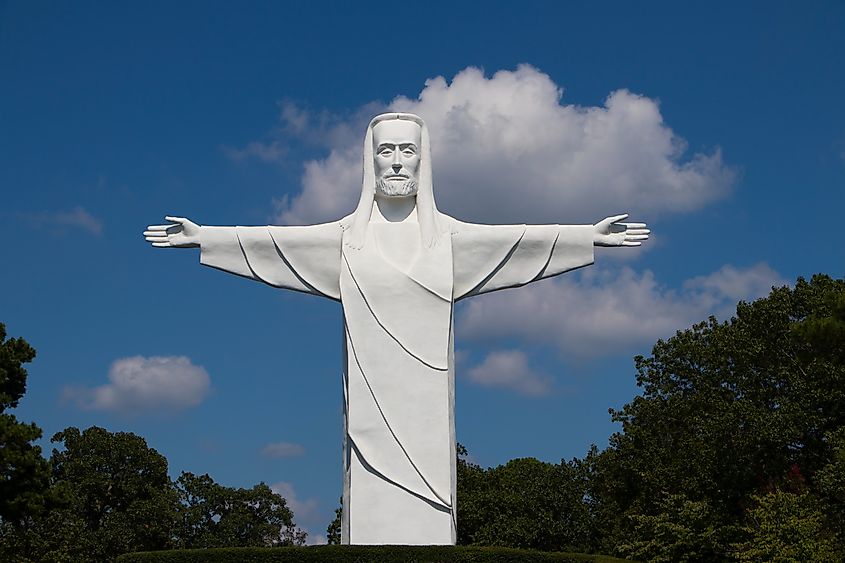
Eureka Springs is the land of strange landmarks. This undersized Ozark city claims a see-through church called Thorncrown Chapel; an inside-out residence called Quigley's Castle; a "haunted" historic hotel called the 1886 Crescent Hotel & Spa; an anvil-shaped monolith called Pivot Rock; a legitimate section of the Berlin Wall; and an outdoor amphitheater that hosts The Great Passion Play. Even among those "holy moly!" oddities, the holiest is Christ of the Ozarks, a 67-foot Arkansas homage to Rio de Janeiro's Christ the Redeemer. It attracts with open arms atop Magnetic Mountain.
Little Rock Central High School - Little Rock
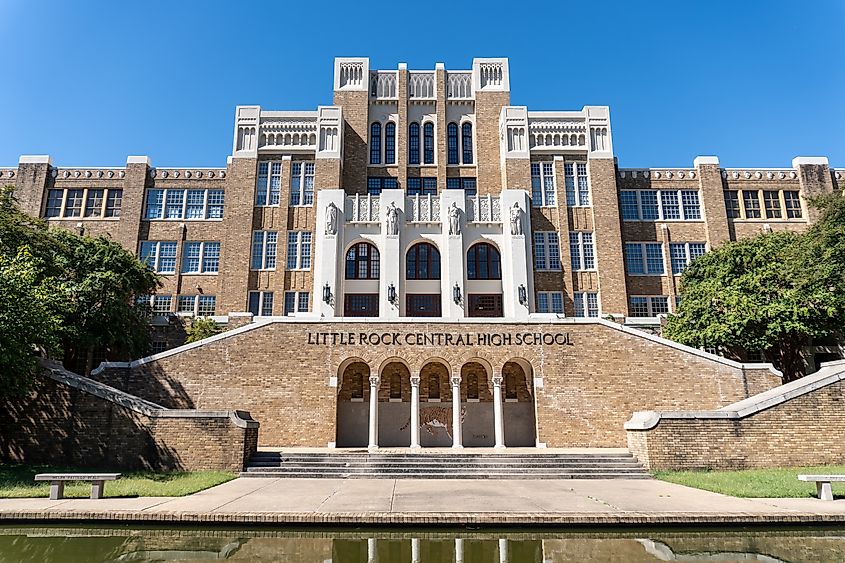
By outside appearances, a normal school, Little Rock Central High School, was one of the most unique battlegrounds of the Civil Rights Movement. In 1957, nine gifted black children were prevented from entering the all-white institution by Arkansas' governor, National Guard, and an angry white mob. As racial segregation in public schools had been deemed unconstitutional, President Dwight D. Eisenhower mobilized the 101st Airborne and federalized the Arkansas National Guard to escort the "Little Rock Nine." It took an army, but the black students successfully integrated Little Rock Central High School. Now part of a historic complex with a visitor center and guided tours, it is America's only functioning high school within a National Historic Site.
If you ever forget about Arkansas' spectacular strangeness, there are plenty of big reminders to set you straight. The biggest (in either size or intrigue or both) are Crater of Diamonds State Park, Monster Mart, Rush Ghost Town, Glory Hole Falls, Crystal Bridges Museum of American Art, Blanchard Springs Caverns, Christ of the Ozarks, and Little Rock Central High School. Which of those landmarks will you mark on your calendar?











